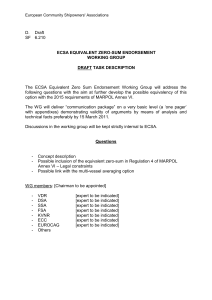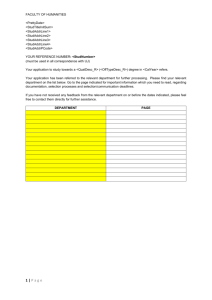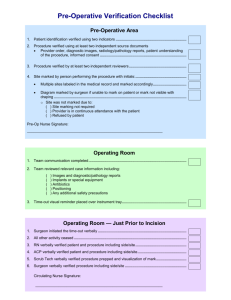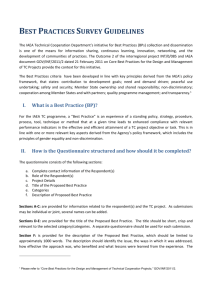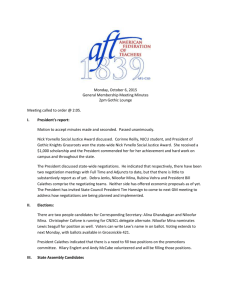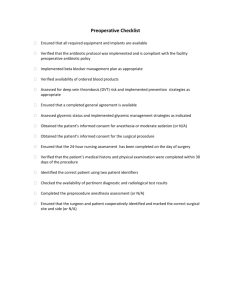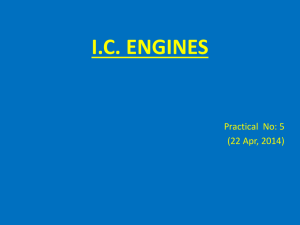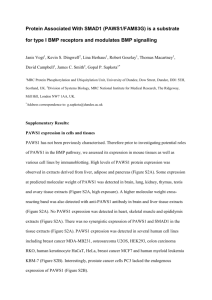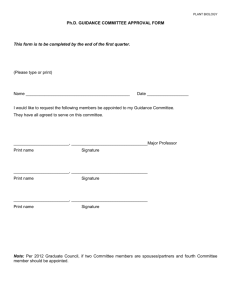Annex 1 Individual Assessment Form
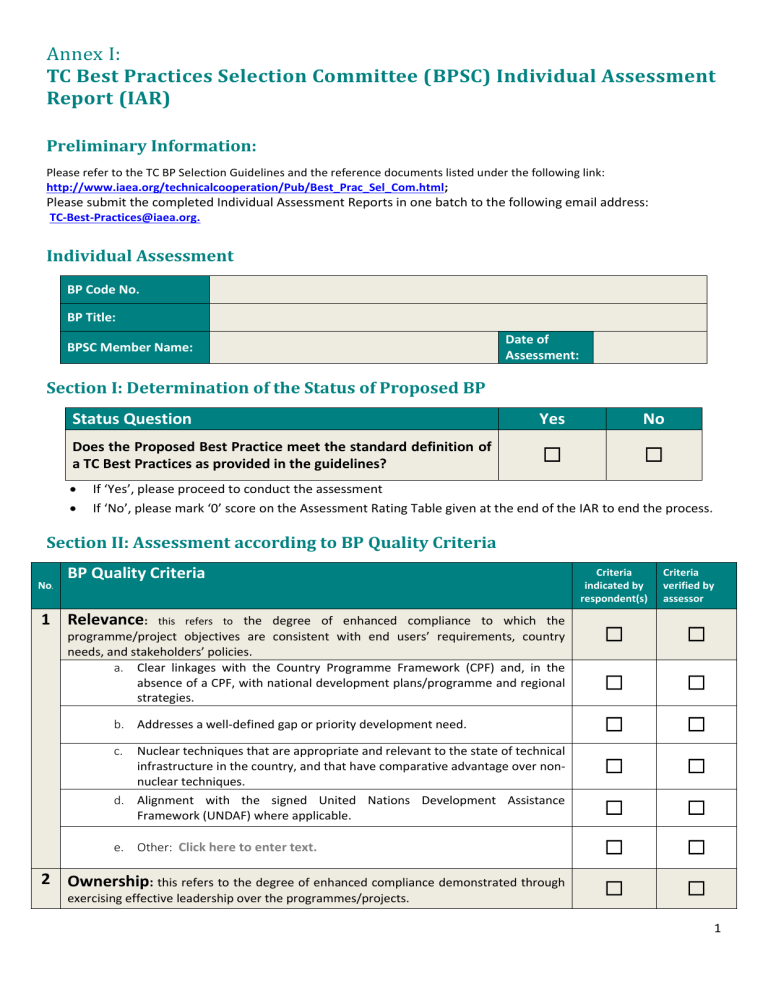
Annex I:
TC Best Practices Selection Committee (BPSC) Individual Assessment
Report (IAR)
Preliminary Information:
Please refer to the TC BP Selection Guidelines and the reference documents listed under the following link: http://www.iaea.org/technicalcooperation/Pub/Best_Prac_Sel_Com.html
;
Please submit the completed Individual Assessment Reports in one batch to the following email address:
TC-Best-Practices@iaea.org.
Individual Assessment
BP Code No.
BP Title:
BPSC Member Name:
Date of
Assessment:
Section I: Determination of the Status of Proposed BP
Status Question Yes No
Does the Proposed Best Practice meet the standard definition of a TC Best Practices as provided in the guidelines?
☐ ☐
If ‘Yes’, please proceed to conduct the assessment
If ‘No’, please mark ‘0’ score on the Assessment Rating Table given at the end of the IAR to end the process.
Section II: Assessment according to BP Quality Criteria
No
.
BP Quality Criteria
1 Relevance
: this refers to the degree of enhanced compliance to which the programme/project objectives are consistent with end users’ requirements, country needs, and stakeholders’ policies.
a.
Clear linkages with the Country Programme Framework (CPF) and, in the absence of a CPF, with national development plans/programme and regional strategies.
b.
Addresses a well-defined gap or priority development need.
c.
Nuclear techniques that are appropriate and relevant to the state of technical infrastructure in the country, and that have comparative advantage over nonnuclear techniques.
d.
Alignment with the signed United Nations Development Assistance
Framework (UNDAF) where applicable.
Criteria indicated by respondent(s)
Criteria verified by assessor
☐
☐
☐
☐
☐
☐
☐
☐
☐
☐
☐ ☐ e.
Other: Click here to enter text.
2 Ownership
: this refers to the degree of enhanced compliance demonstrated through exercising effective leadership over the programmes/projects.
☐ ☐
1
a.
Member State’s commitment to the programme/project reflected by national and regional policies, the allocation of required human, technical and financial resources, and provision of enabling environment.
b.
Planning and preparation of programme/project documentation carried out using a consultative process and participation of all programme stakeholders.
c.
Clear definition of the roles of national institutions and stakeholders expected to participate in the project.
d.
Counterpart organization(s) has clear mandate to carry out the proposed project.
e.
Government cost sharing and/or funding from other partners is ensured.
f.
Other: Click here to enter text.
3 Sustainability:
this refers to the degree of enhanced compliance with the continuation of benefits after the completion of a programme/project; the probability of continued long term benefits; and resilience to risk of the net benefit over time.
a.
Downstream mechanisms and modalities are in place to ensure effective linkages between counterparts and end-users.
b.
Partnerships at the national level are in place.
c.
Partnerships with UN specialized agencies, international development organizations, non-profit organizations and private sector are identified and partnership proposals are available wherever possible.
d.
Partnerships with regional agreements and among Member States through regional cooperative agreements are identified and partnership proposals are available wherever possible.
e.
Use of national and regional expertise encouraged. Project design incorporates Technical Cooperation among Developing Countries (TCDC).
f.
Project is integrated into the country’s sector/programme planning and budgeting system and there is a TC programme/project exit strategy in place, ensuring an effective handover to the counterpart institution.
g.
Adequate physical and institutional infrastructures as well as human resources are available to support the project.
h.
Realistic project budget plans are in place.
i.
Other: Click here to enter text.
j.
Downstream mechanisms and modalities are in place to ensure effective linkages between counterparts and end-users.
4 Efficiency:
this refers to is the degree of enhanced compliance with performance indicators, addressing the question: ‘Are we using the available resources optimally to achieve the planned results?’ a.
Project implemented within time and budget to achieve outputs described in the Logical Framework Matrix (LFM).
b.
Improvement in productivity of the implementation process according to
LFM, as measured by the performance indicators.
c.
A risk management/mitigation plan is prepared to address identified major risk areas if needed.
d.
Other: Click here to enter text.
☐
☐
☐
☐
☐
☐
☐
☐
☐
☐
☐
☐
☐
☐
☐
☐
☐
☐
☐
☐
☐
☐
☐
☐
☐
☐
☐
☐
☐
☐
☐
☐
☐
☐
☐
☐
☐
☐
☐
☐
☐
☐
☐
☐
2
5 Effectiveness:
this refers to is the degree of enhanced compliance to which programme/project objectives were achieved or are expected to be achieved, taking into account their relative importance. It is an aggregate measure of (or judgment on) the merit or worth of an activity, that provides the extent to which it is contributing towards institutional development in the Member State.
a.
Realistic risks and reasonable assumptions are incorporated into planning and risk mitigation strategies.
b.
A self-evaluation mechanism is developed and functionalized to gauge effectiveness during and after the life cycle of the project. There is clear evidence of socio-economic impact as defined by the Member States and/or the counterpart institution.
c.
Political environment and political will maintained through continued dialogue during changing scenarios such as general elections, government changes or policy shifts.
d.
Other: Click here to enter text.
6 Other:
Please add and specify any other significant quality aspect not already covered above: for example field dynamics of projects/programmes, communications and promotion, seeking linkages with other international, regional or national organizations.
Section III: General Remarks:
Please add qualitative comments that might help in the joint assessment
☐
☐
☐
☐
☐
☐ ☐
Section IV: Assessment Rating
Please rate, with an X, the Proposed Best Practice on a scale from 0-5 with ‘5’ being the highest value on fully meeting indicated quality criteria and ‘1’ being the lowest. Score ‘0’ means that the submission does not fulfil the standard definition of a TC Best Practice and is not being assessed.
Score
0
3
4
1
2
5
Interpretation
The proposed BP does not meet the definition of a TC
Best Practice and should not be assessed
None of the indicated quality criteria is verified
Indicated quality criteria verified = 25%
Indicated quality criteria verified = 50%
Indicated quality criteria verified = 75%
Indicated quality criteria verified = 100%
Rating
☐
☐
☐
☐
☐
☐
Thank you for your assessment.
☐
☐
☐
☐
☐
3
